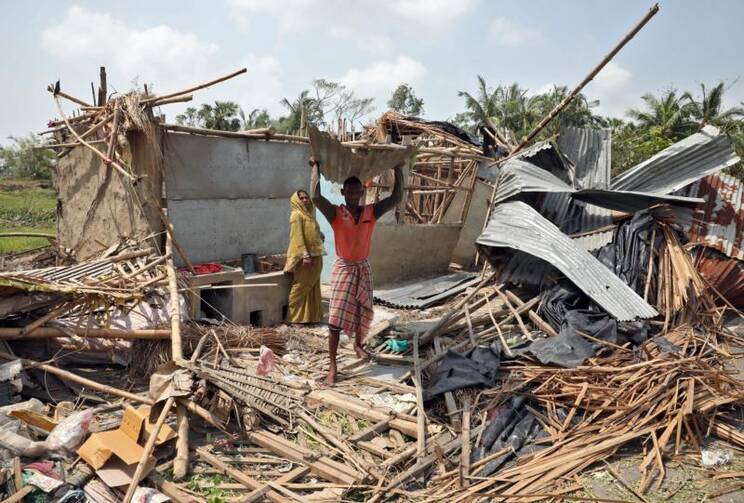BHOPAL, India (CNS) -- Catholic volunteers provided food and shelter to hundreds of people in coastal eastern India after Cyclone Amphan devastated the region May 20, killing 80 people and destroying thousands of homes.
Indian Prime Minister Narendra Modi plans to travel to West Bengal and Odisha states to review the situation.
The most powerful cyclone to hit eastern India and Bangladesh in more than 20 years tore down homes, carried cars down flooded streets and inundated farmland. Reports said it was the first such cyclone that Kolkata had experienced in about three centuries.
Archbishop Thomas D'Souza of Kolkata, capital of West Bengal state, asked parishes to open their facilities to people left homeless by the storm, feed them, and assist anyone in need.
Although Odisha state frequently witnesses cyclones and the last superstorm hit it in 1999, West Bengal usually have escaped powerful cyclones.
Kolkata, formerly known as Calcutta, was once India's capital under British colonial rule.
"It was the worst and most terrifying experience I ever had in my life," said Father Franklin Menezes, social work director of the Archdiocese of Kolkata.
"I just shut the doors and windows of my residence and kept reciting the rosary as the wind battered the windows with a sound like a roaring lion," Father Menezes told ucanews.com May 21.
Sajjad Qarim of Mandarmani village said the mandatory use of masks and social distancing to mitigate COVID-19 have had to be abandoned.
"Over 30 people are now staying in two rooms as several houses were destroyed. The devastation was serious as many houses are made of mud," Qarim said.
The storm hit most of Kolkata, uprooting thousands of trees and destroying the city's green cover, Father Menezes said.
"Public roads were flooded and even dead bodies were found floating in water as many died of electrocution," the priest said.
Local officials said nearly 1,600 villages were inundated by flooding and wind damage.
"Church people have not been successful in establishing any contact in those areas. Once we establish contact, we will be able to understand their plight," Father Menezes added.
Archbishop D'Souza told UCA News May 22 the death toll could have been much higher had the state government not evacuated more than 500,000 people to safer places.
"Many churches and other institutions of the Catholic Church suffered damage. However, there is no loss of life from the community," he said, adding that the "top priority is to arrange food for so many people who have lost everything."
Several church facilities in coastal areas are accommodating people and providing them with food and basic requirements.
In Odisha, Amphan caused widespread devastation, with farmers suffering widespread crop and land damage, Father Lijo George, social work director in the Diocese of Balasore.
"The wind and rain swept away thousands of acres of rice paddy ready for harvest, groundnuts and vegetables," the priest said. Some villagers also lost livestock.
An initial survey by the diocese found thousands of people "lost their livelihoods and hundreds of other lost their village mud houses."
Father George said the full extent of the damage is unknown.
The Odisha government arranged for immediate needs including food and shelter. "Therefore, we need to work with people for their rehabilitation by providing help to restart their lives through some income generation programs," Father George said.










